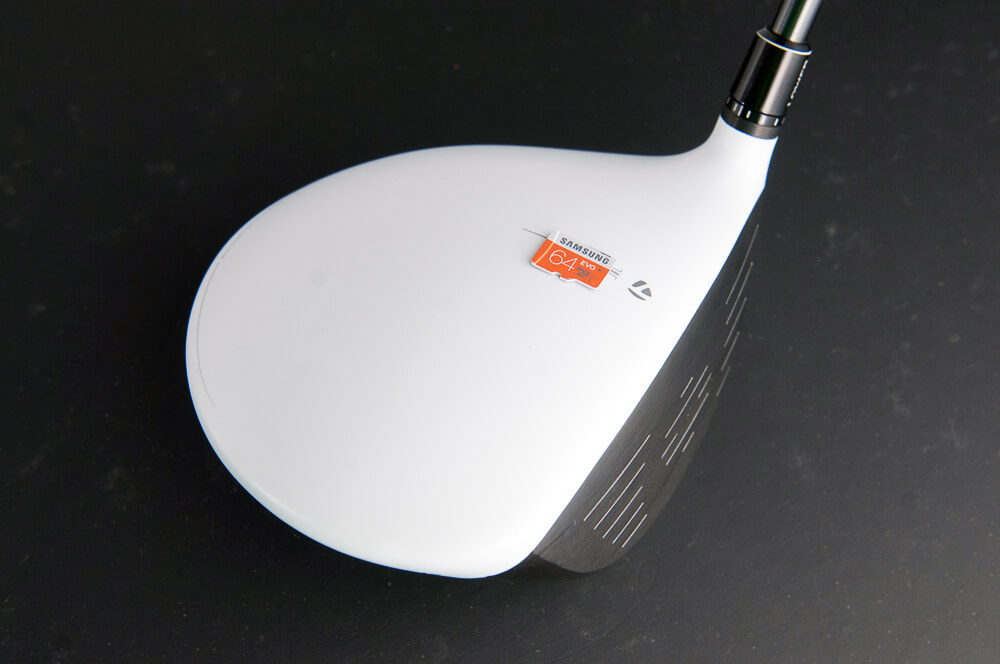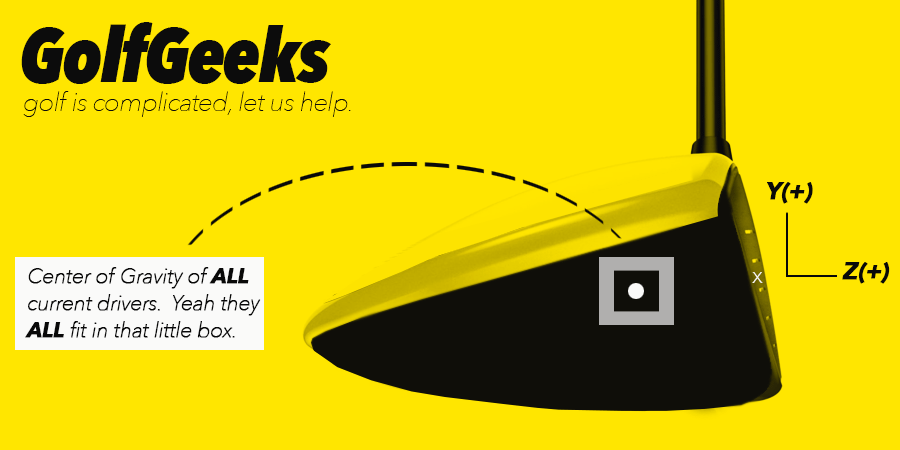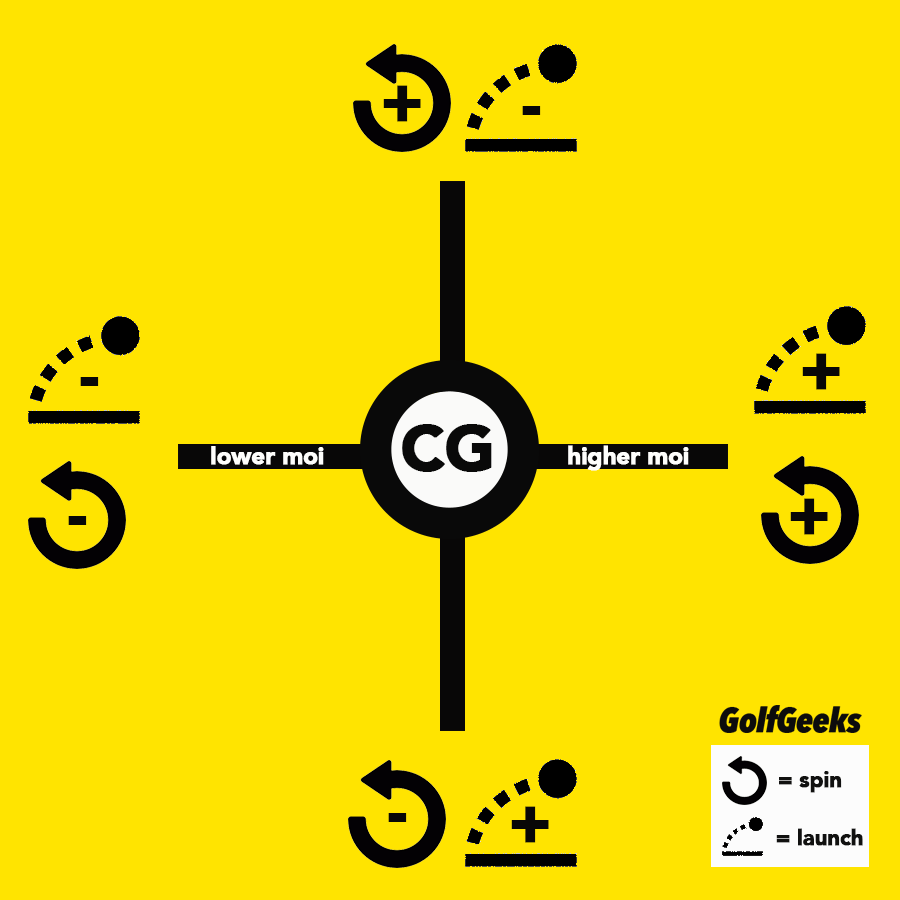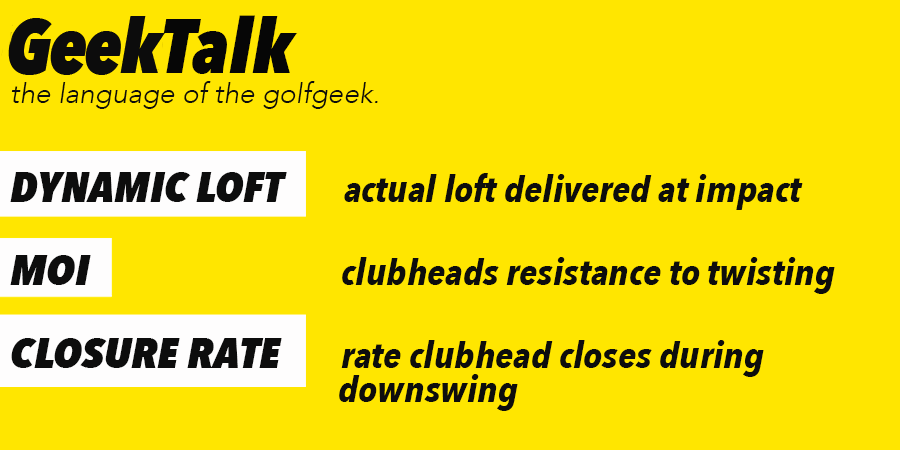You care about your driver’s center of gravity. You may not realize it yet, but you do.
I will concede that this sort of science-y stuff can be a little bit boring, and it certainly hasn’t helped my cause any that the golf companies have tossed the phrase center of gravity around so much that it’s basically lost all meaning (while at the same time losing your interest).
But bear with me guys, keep your eyes open and read on, this CG stuff…it’s really interesting. And it’s not interesting because I said so, it’s interesting because, whether you know it or not, it’s a large part of the reason why you’re playing the driver you’re playing today.
So what exactly is Center of Gravity, and why exactly do I think it’s so damn important? Let’s get to it.
CG Defined
Center of Gravity (CG or CoG) is the point at which all of the weight of an object appears to be concentrated. An object can be balanced on a small flat point placed directly beneath its center of gravity.
That may sound complicated, but it really comes down to balance. Ever balanced anything on the tip of your finger, or as the R&D guys occasionally do, the tip of a pen? The physical point at which an object is perfectly balanced…where it doesn’t tip over one way or another and crash to the floor, that’s its center of gravity.
You might not think that a physics lesson most have learned on a playground teeter totter would be relevant to a golf club performance discussion, but not only is it relevant, it’s at the very center of the discussion.
Sorry…won’t happen again.
Why CG Location Matters
CG location matters because it heavily influences both performance and feel. How high your driver launches, how low it spins, how it feels, and how it sounds at impact, that all begins with its center of gravity.
Before we dig deeper into the specifics of how CG location impacts both performance and feel, there are a few things we need to make sure everybody understands.
1. It’s Called Center Of Gravity For A Reason.
As you might expect given its label, the center of gravity is always located very near the center of the clubhead. The CG of every driver measured for this series of articles is located within a box that’s 14mm front to back and 12mm top to bottom.
To put that into perspective, we’re talking about a box just a little bigger than your average Micro SD Card. It’s that small.
You’ve probably seen some of the marketing/advertising graphics where golf companies claim to move the center of gravity from the extreme rear of the clubhead so far forward that it’s practically pressing against the face.
That’s total nonsense…outright shenanigans. Using our SD card (see the image above) as the example, while those OEM graphics convey a CG shift significantly more impressive than the equivalent of moving the CG from the ‘U’ to the ‘G’, in Samsung, actual reality is much closer to our example than theirs.
The reason it’s called center of gravity is because it’s near the center of the clubhead. Always.
Now that said, the CG location of a driver head has a slight forward bias because:
- The face is much thicker and heavier than the rest of the body
- The hosel (and all of its weight) is near the front of the club
2. Your Driver Is Stuck in the Box…Sorry.
We can talk physics and materials all day long, but the reality is that, with what engineers have to work with right now, it’s basically impossible to move center of gravity outside of that 12mm x 14mm box (SD card) we talked about before. Kind of amazing, right? Front CG, back CG…your driver, my driver, the center of gravity is always somewhere within that little box.
3. How Millimeters Make Drivers Go Farther.
Small CG movements within our little box can have a significant impact on performance.
Despite having CG locations that are only millimeters apart, a Ping G30 plays very differently from a Callaway Big Bertha Alpha Double Black Diamond. Why? CG location.
For those clubs with movable weight (adjustable CG technology), moving those weights around can alter performance significantly. For confirmation of that statement, try comparing numbers on an R15 with the weights in the middle to an R15 with the weights in the perimeter (MOI) position. Do the same with a FLY-Z+ with the weight in the front compared to the weight in the back. Grab a Callaway Alpha series driver and flip the core. Again…we’re talking about millimeters here, but those millimeters matter.
Changing the CG location changes performance.
4. Moving Mass Doesn’t Always Bring Significant Change.
I know…I just said nearly the opposite, but it’s important to understand that not all adjustable mass systems are created equal. The significance and impact of flipping, sliding, or any other type of CG movement depends on three things:
1. The direction the weight is being moved
2. How much weight is being moved
3. How far the weight is being moved
The more weight you can move over a greater distance, the more the CG will shift. Moving heavy weights over a comparatively small distance, or comparatively light weights over a greater distance doesn’t actually accomplish much.
How Center of Gravity Affects Performance
The above chart illustrates how changes in center of gravity impact performance. Here’s a quick summary.
CG Forward
Dynamic Loft: decreases
Spin: decreases
Closure Rate: decreases
MOI: decreases
CG Up
Dynamic Loft: decreases
Spin: increases
CG Back
Dynamic Loft: increases
Spin: increases
Closure Rate: increases
MOI: increases
CG Down
Dynamic Loft: Increases
Spin: Decreases
GeekTalk
Dynamic Loft is the actual loft delivered to the ball at impact.
At equivalent measured lofts, a driver with a back CG will produce more dynamic loft, and therefore launch higher than a driver with a forward CG placement. More loft produces more spin.
Closure Rate or Dynamic Closure Rate is the rate at which the clubhead closes during the downswing. The more forward the CG the slower the closure rate. Clubs with slower closure rates are generally described as being more workable. Back CG designs with faster closure rates are more forgiving, and can help to mitigate a slice.
MOI is often defined as the clubhead’s resistance to twisting. While technically accurate, that leads some to believe MOI plays a greater role in accuracy than it actually does. In perhaps simpler terms, MOI is a protector of ballspeed. The higher the clubhead MOI the more ballspeed, and by extension distance, is preserved on balls struck somewhere other than on the sweet spot.
How Center of Gravity Affects Feel
While we can’t put hard numbers to feel the way we can performance, we can make some generalizations about how center of gravity affects feel.
On a comparative basis:
- Drivers with forward CG locations often feel heavier than those with rear CG placements
- A forward CG location will cause the shaft to feel stiffer.
- Because of the effect on closure rate, forward CG drivers may be harder to square, and some golfers will find it difficult to control the club during swing
While it may not be universally true, I suspect that many of you favor clubs with similar CG locations. Whether driven by feel or performance, we like what we like, and whether we know it or not, that starts with CG location.
Details to Come
Check back tomorrow when we bring what we’ve learned today into the real world. We’re going to publish CG locations for several of the most popular drivers on the market this season. Whose drivers have the lowest CG? Who’s really forward? Who’s high and spinny?
We’re about to show you.



















Bill
4 years ago
Great article! Thanks Tony! Thanks to you I no longer play a Callaway golf ball and now I am afraid of my driver! Haha. Keep up the good work!